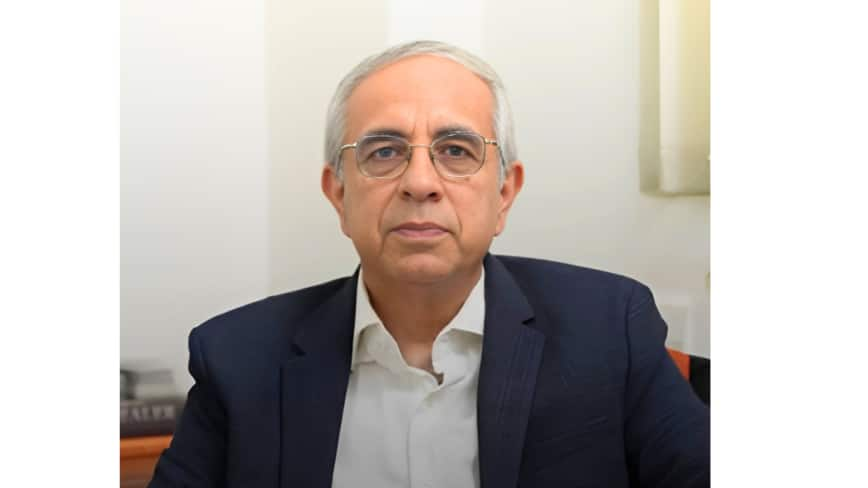India’s IVF sector is booming, projected to reach USD 4.9B by 2034 with cycles set to double by 2030. R&D in AI, imaging, and digital traceability is boosting outcomes, but high costs, limited CME, and stigma remain. Expanding access and tech adoption offer major growth.

Ajay Kandhari, Managing Director, DSS Imagetech
Once considered a niche medical service, IVF (in vitro fertilization) has evolved into a vital component of fertility care, reflecting its increasing acceptance and importance within the broader healthcare landscape. The IVF market in India is expanding quickly. As per Global Market Insights, over USD 1.4 billion in 2025, the market is expected to surpass USD 4.9 billion by 2034. This growth is a result of increased infertility, postponed parenthood, changes in lifestyle, and increased knowledge about assisted reproduction. India currently witnesses around 200,000–250,000 IVF cycles annually, a number projected to almost double to 400,000 cycles by 2030.
Indian R&D is playing a pivotal role in advancing IVF, with innovations such as AI-assisted embryo assessment, time-lapse imaging, and digital traceability improving clinical outcomes and standardizing practices. India's collaborative R&D ecosystem, backed by the government, has positioned it as a global leader in providing affordable, high-quality healthcare, particularly in areas like IVF. The growth is a result of strategic policy initiatives, increased public and private partnerships, and a focus on both innovation and accessibility.
What are the biggest challenges and gaps the IVF industry is facing today?
The IVF industry in India is growing rapidly, but several challenges persist. On the ecosystem front, R&D and manufacturing face obstacles such as high costs and limited infrastructure. Another significant gap lies in medical education. The absence of a mandatory continuous medical education (CME) system means many doctors may not consistently update their skills or engage in research—both of which are essential in a fast-evolving field like IVF. This can hinder the adoption of new techniques and impact the overall quality of care.
Beyond infrastructure, social stigma and cultural barriers surrounding infertility continue to discourage many couples from seeking treatment. While societal attitudes are gradually shifting, full acceptance remains a work in progress. Affordability is another critical issue: IVF treatments remain costly, and limited insurance coverage forces many couples to make difficult financial decisions. Addressing these gaps—in policy, awareness, training, and affordability—will be key to making IVF more accessible and inclusive across India.
What measures can support IVF clinics in overcoming these challenges?
India’s IVF and Assisted Reproductive Technology (ART) ecosystem has long faced challenges such as the absence of reliable end-to-end solution providers, fragmented supply chains, and limited access to advanced technologies. Addressing these gaps requires an integrated approach that brings together cutting-edge technology, clinical support, and supply chain consistency to ensure that fertility clinics can operate seamlessly and deliver better outcomes.
What growth opportunities do you see for the IVF sector in the coming years?
India’s IVF sector presents significant growth opportunities in the years ahead. With fertility rates falling below replacement levels nationally, more couples are turning to IVF. The next phase of growth is expected to be driven by technology adoption; clinics are increasingly embracing AI tools, digital imaging, and time-lapse incubators to improve embryo selection and enhance success rates. The introduction of AI-assisted solutions, digital workflows, and high-quality consumables is further enabling clinics to innovate and improve patient outcomes.
Another key opportunity lies in expanding into tier-2 and tier-3 cities. Improving access in these regions, supported by reliable products, training, and technology integration, will help reach a wider cross-section of the population. Together, these advancements position the sector to play a transformative role in shaping India’s reproductive healthcare landscape.
What is the role of Hanahealth in changing the IVF landscape in India?
With declining fertility rates across India, the need for assisted reproductive solutions is growing rapidly. Hanahealth is addressing this gap by bringing advanced technologies and comprehensive support to the IVF ecosystem.
Backed by DSS Imagetech’s 80+ years of credibility in genomics, pathology, oncology, and reproductive health, Hanahealth carries forward this legacy with a specialized focus on IVF. It empowers IVF labs and hospitals with state-of-the-art solutions, including inverted microscopes, ICSI systems, time-lapse incubators, sperm analysis tools, and culture media, enabling greater efficiency, traceability, and improved clinical outcomes.
Beyond technology, Hanahealth strengthens capabilities through training and workshops for embryologists and lab technicians, ensuring smooth adoption of advanced practices. Its strong local service network guarantees swift technical support and reliable service, minimizing downtime for clinics.
By combining innovation, education, and responsive support, Hanahealth is transforming the IVF landscape in India and helping build a more confident and future-ready ecosystem.
Empower your business. Get practical tips, market insights, and growth strategies delivered to your inbox
By continuing you agree to our Privacy Policy & Terms & Conditions
